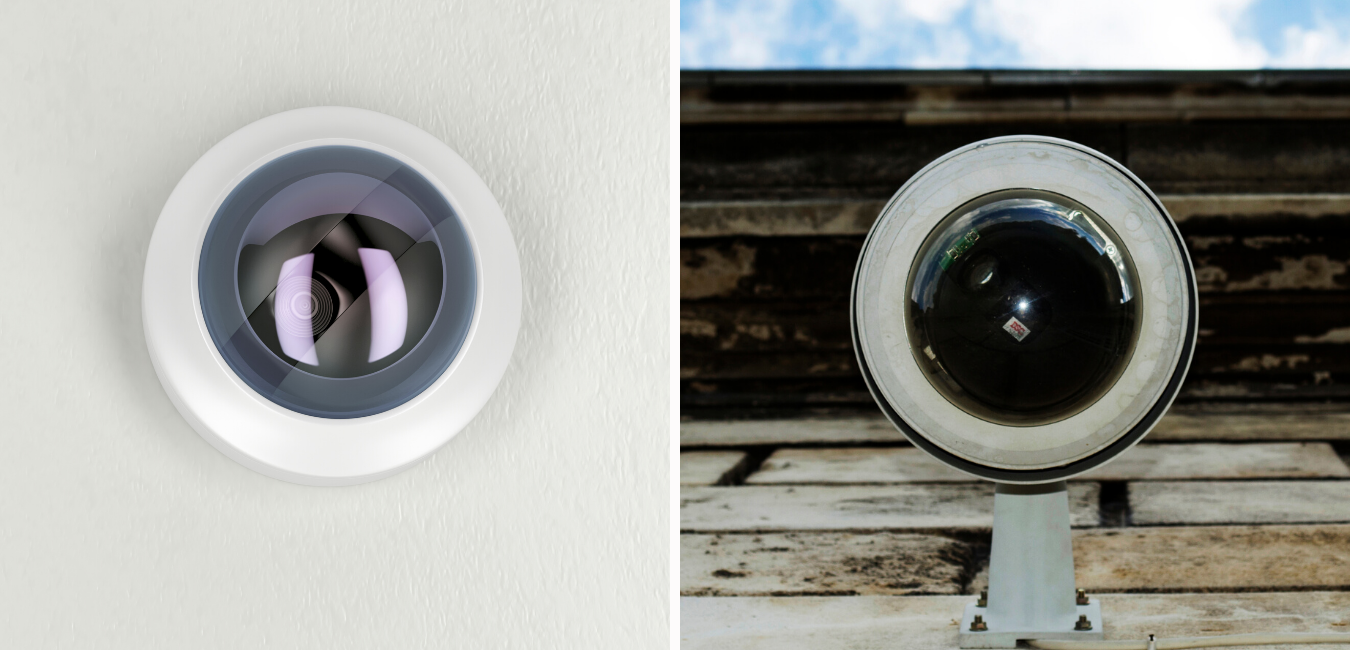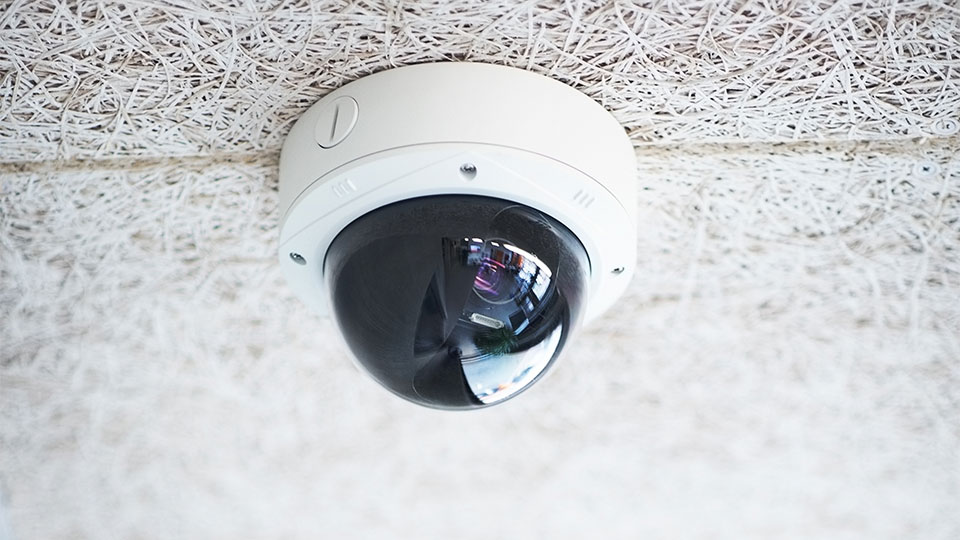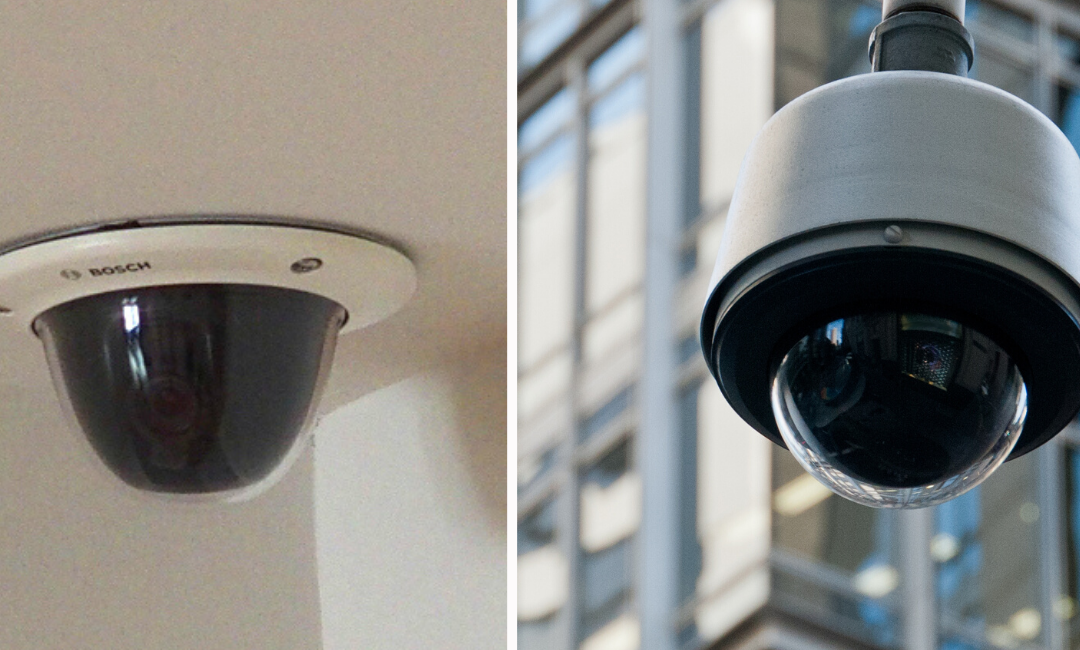When you are considering the safety of your business, security cameras and surveillance give added peace of mind. Whether you are looking for a security system that incorporates only indoor cameras, only outdoor cameras, or both, We are here for your every unique security need. Umbrella Security Systems is a leading expert in Commercial Security Systems Consulting and System Integration. Focusing on Professional Video Surveillance, Access Control Systems, and Emergency Mass Notification Solutions for Business and Government clients.

Indoor and Outdoor Security Cameras
The main difference between Indoor and Outdoor Security Cameras is the types of external factors that each camera needs to be able to withstand. Both cameras typically come in similar styles and with similar features, outdoor cameras have to be able to confront all kinds of weather and different light conditions.
Outdoor Cameras are more vulnerable to be tampered with, so typically, they are made out of more durable materials such as metal and they might be heavier or even housed within a casing to discourage simple removal.
Indoor Cameras are typically smaller, lightweight, and much less intrusive than the bigger, bulkier outdoor cameras. Both types of cameras use features like infrared which allows for very clear pictures in low light and easy transitions when a sudden change of light occurs automatically from color images in bright light to black and white when it gets darker.
The “Dome” Camera is most commonly used for both indoor and outdoor use. These cameras are specially designed to keep the onlooker from knowing where exactly the lens is pointed. This keeps people from hiding the camera. Domes provide an extra level of protection for cameras that are mounted outdoors. Additionally, outside cameras that come with blowers and heaters exist that can provide extra protection against the elements.

Outdoor Surveillance Camera Usage
Imperative Differences Between Indoor Cameras
There are several important differences between indoor and outdoor cameras. First, outdoor cameras are usually more expensive than indoor, this is because of expanded power and network infrastructure. Next is because outdoor cameras are constantly exposed to bitter elements and require housing that is protective and includes blowers, heaters, and Ingress Protection-rated enclosures. Finally, outdoor cameras might require more expensive features such as WDR or illuminators in order to be effective in broad, outdoor lighting conditions.
Camera Mounting
Mounting a security camera outside might also have the added expense of weatherproof enclosures for auxiliary equipment, special lifts, security hardware, or special permits.
Important Takeaways
Most surveillance installations use only a small amount of outdoor cameras. Although, vertical markets that are engaged in protecting assets or monitoring hazards in outdoor areas, such as critical infrastructure, law enforcement, municipal transportation, and residential clients, place a premium on outdoor surveillance. Outdoor cameras, to a lesser extent, are installed for retail and other businesses to monitor areas such as outdoor dining areas, parking lots, and to expect external threats from accessing indoor areas.

The Appearance of Indoor and Outdoor Cameras
Positioning
Every key entry point of your facility should have an outdoor camera mounted. They should be installed at garages, gates, and all doors to the facility. Mounting a camera at every corner of the facility allows for a near-perfect view of the whole perimeter and will also record attempts to enter through windows. Additionally, if your cars are parked outside, you can point a camera toward them to catch any attempts of a break-in. Indoor cameras are intended to record activity within the facility They’re placed in high-traffic areas and where more valuable items are kept.
Camera Size
The biggest advantage that indoor cameras have over outdoor is that indoor cameras can be created to be much smaller. Therefore, they can be placed in unobtrusive spots and not interfere with the setting at all. They are not, however, suitable for outdoor use, since they aren’t weatherproof. Outdoor cameras are much bigger, bulkier, and more visible. This serves as a deterrent for any intruders that might try to break-in otherwise.
Popular Types of Cameras Used
Dome cameras are most recommended for both indoor and outdoor security installations. You can’t tell which direction the lens is pointed, therefore it’s harder for an intruder to hide from the camera.
Adaptation to Light
Today’s security cameras are equipped to easily transition to different levels of lighting. Infrared records a clear image even in extremely dark conditions. The cameras are able to adapt even to quick changes in light.
Installation
Security camera installation is best left installed by professionals that have exceptional knowledge of what goes into the process and how to execute it. Most companies, such as we at Umbrella Security Systems, specialize in the installation of commercial surveillance systems.
Outdoor cameras are likely to need hard-wiring into the electric system instead of having it operated by batteries which usually calls for a licensed electrical contractor. Indoor security cameras don’t need to be set in a single location. Newer wireless models connect to your network, run on batteries, and can be relocated easily.
Therefore, they can be moved from room to room according to your unique surveillance needs. The professionals can then connect them to your facility’s network and address the most optimal locations to install the cameras. Small cameras can also be permanently installed in any high-traffic areas like near smoke detectors. These should, again, be installed by professionals that will hard-wire them so that you won’t have access to them in order to change batteries.
Cost
The cost of Security Cameras varies depending on how new the camera is, the quality of the camera, and its unique features, as well as any other specs. As far as the cost of the installation of security camera systems goes is different depending on your business’s unique needs. At Umbrella Security Systems, we are leading experts in Commercial Security Systems Consulting and System Integration. Focusing on Professional Video Surveillance, Access Control Systems, and Emergency Mass Notification Solutions for Business and Government clients.
Durability
Indoor security cameras can’t be used outside since they aren’t weatherproof. Outdoor security cameras have to provide surveillance while also resisting a large range of outdoor weather conditions. They are waterproof and resistant to tampering. Depending on the climate you live in, it might even need a blower and heater. If someone tried to use an indoor camera outside, it wouldn’t last for very long.
Wireless
Wireless systems are quickly becoming (especially indoors) the standard in security cameras. As connectivity gets better, outdoor systems can even be linked to your business network for transmission and storage of images, thus reducing installation costs and eliminating the need to hide cables.
Privacy
Outdoor security cameras record activity outside without catching every single move that happens inside the facility. So, if your business’s main concern is to drive away and record intruders, an outdoor security camera system should be installed. Although, you most likely want to keep watch of things that happen inside of your facility, even when you aren’t there. Peace of mind is invaluable.
Here For Your Indoor and Outdoor Security Camera Needs

What Other Factors Separate Indoor and Outdoor Cameras?
Outdoor Camera Durability
The main difference between indoor and outdoor security cameras is the fact that they have the ability to take on the different types of elements that they are located in. Outdoor security cameras are, of course, located outside. So, they’re built with extremely high quality and durability standards so that they can handle elements and weather such as rain, snow, moisture, extreme heat cold, and wind. They also are typically impact-resistant and dustproof to keep the elements and dirt out. They’ll typically be IP-rated, a designation that clarifies exactly just how waterproof or impact-resistant they really are. Oftentimes, outdoor security cameras will be made of metal since they are more likely to be messed with than indoor cameras.

Indoor Security Cameras
Indoor cameras, however, basically sit inside all of the time, totally safe from the elements in a (typically) climate-controlled environment. Because of this, they aren’t waterproof and not built nearly to the same standards as outdoor security cameras. They may still be rather durable, impact-resistant, and dustproof, though.
Size
While not a “rule”, outdoor security cameras will also typically be quite a bit larger than indoor ones. This is because of their more durable, often waterproof build. Indoor cameras are much more concerned with blending into their surroundings than outdoor cameras. Indoor cameras are designed to be placed in a more subtle fashion and less visible, in order to distract less from the inside of the facility.
Low-Light Capabilities/Software
Many things set indoor and outdoor security cameras apart: build and size aren’t the only ones. In several cases, they also lack the same ability to see in dynamic lighting situations. Outdoor cameras were originally designed to have advanced dynamic range and low-light capabilities which allows them to adapt much better to more complex lighting. They also were designed to handle flashes of light and blackouts in a better fashion. While time passes and technology advances, though, several indoor cameras are now coming with the same capability which allows them to adapt to even more complex lighting.
For example, a security camera that is set in a warehouse or garage will need to have a dynamic range that is wide enough to see lighting situations as different as the dark warehouse and the much brighter outside of the building.
Interchangeability
Can you use an Outdoor Camera Inside and Vice Versa? Well, this depends on the exact cameras that are in use. In most cases, a camera that is designed simply for indoor use will NOT be a good choice for outdoor use, as they won’t be built to the same standards of waterproofness and durability. The same goes for most outdoor cameras: while more than durable for indoor use, of course, it would be far too large, hefty, and impractical to install.

